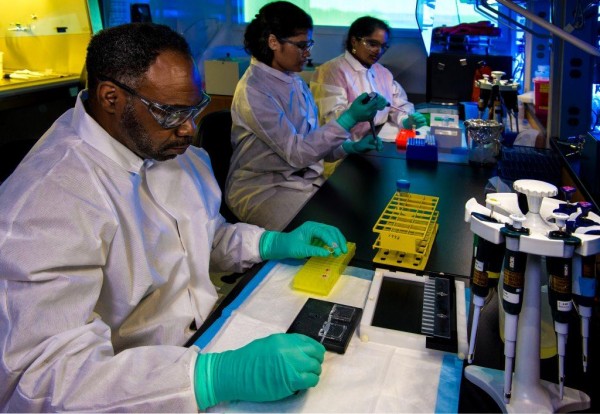Researchers Evaluate Use of GEP Testing in Patients With Melanoma

A group of international melanoma researchers expresses optimism about the future use of GEP patients with melanoma.
A consensus statement by a team of international melanoma researchers, published today in JAMA Dermatology, assesses the use of prognostic genetic expression profile or GEP testing to lead clinical management of melanoma patients.
With the evaluation, the team warned against the routine use of presently obtainable GEP tests for patients who have cutaneous melanoma.
Predictive GEP is a method that gauges a particular group's expression of genes that may contribute to the prediction of patient results.
For melanoma, GEP trials are designed to forecast if a patient's tumor is possible to become aggressive and eventually, metastasize.
Increased Use of GEP Testing
Although national melanoma care guidelines are not promoting GEP testing, its use is increasing among clinicians caring for patients who have melanoma.
According to clinicians who have used it, GEP testing also serves as their guide in making decisions on both treatment and surveillance imaging.
GEP Testing may have some restrictions. One possible case would be in early-stage tumors from which low-risk instances could provide patients with a high-risk result or maybe a deceitful sense of security for them to receive more aggressive treatments or further care that may not be necessary.
However, people knowledgeable in melanoma testing say that there are no national standards when it comes to the type of test to be used, when it is used, or how precise such tests should be.
DON'T MISS THIS: Research Shows Link Between Flu and Pneumonia Vaccines and Alzheimer's Disease
How the Testing Should be Used
The researchers from the Melanoma Prevention Working Group tried to find ways to advance further discussions around the manner and time GEP testing should be used by clinical practitioners and professionals who care for melanoma patients.
By conducting a series of meetings and discussions, surveys, and literature reviews, the said experts wrote this statement to assess present data and make recommendations on how GEP testing should be used in melanoma.
Their main objective is to guide clinicians in identifying when and how GEP should be employed in clinical practice.
Another objective is to outline the standards by which tests need to be assessed and integrated into guidelines for clinical care.
Hope for GEP Testing in Melanoma Patients in the Future
Melanoma Prevention Working Group said it included roughly 200 dermatologists, medical oncologists, surgical oncologists, and lab scientists specializing in melanoma.
University of Utah dermatology professor Doug Grossman, M.D., Ph.D. said they are "optimistic about the future use of GEP patients with melanoma."
The professor, who is also the Huntsman Cancer Institute's Melanoma Center leader, added that they are hopeful that this consensus statement can be a means to clinicians in further understand the limitations of GEP testing. It could also be useful in the assessment of the application of new trials as they become obtainable.
IN CASE YOU MISSED THIS: Study Shows How Pickled Capers Can Benefit the Heart and Brain
Jul 29, 2020 10:05 PM EDT





